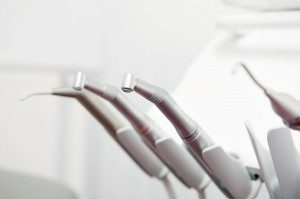 Dental anxiety can be so extreme for some patients that a simple cotton swab on the gums makes them flinch. And others, fearful of pain, simply avoid seeing the dentist, according to a new study by Case Western Reserve University dental researchers on when and how to use sedatives during dental procedures.
Dental anxiety can be so extreme for some patients that a simple cotton swab on the gums makes them flinch. And others, fearful of pain, simply avoid seeing the dentist, according to a new study by Case Western Reserve University dental researchers on when and how to use sedatives during dental procedures.
As a result, dentistry is responding with sedation techniques to make fearful and anxious patients more comfortable.
For a master’s thesis in endodontics, Madhavi Setty set out to understand how dental specialties—such as endodontics for root canals, periodontics to treat gum disease, and oral surgery for extractions and corrective surgeries—used moderate sedations in their different specialties.
Moderate sedation allows the patient to remain conscious by suppressing the brain’s responses to pain and stress while still being able to communicate with the dentist. The three dental specialties reported using moderate sedation in conjunction with local anesthesia in order to control anxiety and pain.
Setty’s findings were reported in the Journal of Endodontics article: “An Analysis of Moderate Sedation Protocols Used in Dental Specialty Programs: A Retrospective Observational Study.”
Thomas A. Montagnese, assistant professor in the Department of Endodontics at Case Western Reserve School of Dental Medicine, is the study’s corresponding author and Setty’s thesis adviser. Other contributing authors are: Anita Aminoshariae, assistant professor; Andre Mickel, professor and chair of the endodontics department; and Dale Baur, professor and chair of CWRU’s oral and maxillofacial surgery department. The faculty members were on Setty’s thesis committee.
The findings came from a retrospective study of 84 patients who received care and moderate sedation during a visit to a Case Western Reserve’s dental clinics in endodontics, periodontics and oral surgery graduate programs between 2010 and 2012.
The study also looked at each patient’s age, sex and existing medical conditions, such as high blood pressure, heart trouble or diabetes, that require consideration during treatments. Patients ranged in age from age 8 to 88; their average age was 45. Most (63 percent) were women.
Researchers found moderate sedation was primarily used to calm anxiety in more than half of the patients (54 percent), followed by fear of needles (15 percent), local anesthesia failures (15 percent) and severe gag reflex and claustrophobia from the rubber dam (both 8 percent).
While moderate sedation helps to calm anxious patients, the catch is that not all endodontists are qualified to administer it. The procedure is not generally taught in most graduate endodontic programs, Montagnese said.
The Department of Endodontics at Case Western Reserve introduced training for moderate sedation into its curriculum last year. The study provides a guideline to when its best to use moderate sedation, Montagnese said.
Montagnese explained that endodontic training follows rules and regulations set by the Ohio State Dental Board, and the American Dental Association Guidelines for the Use of General Anesthesia and Sedation by Dentist Guidelines to meet the requirements necessary to qualify for certification to administer moderate sedation.
The ability to use moderate sedation allows endodontists more options for patient care—especially for those anxious and fearful of pain.
